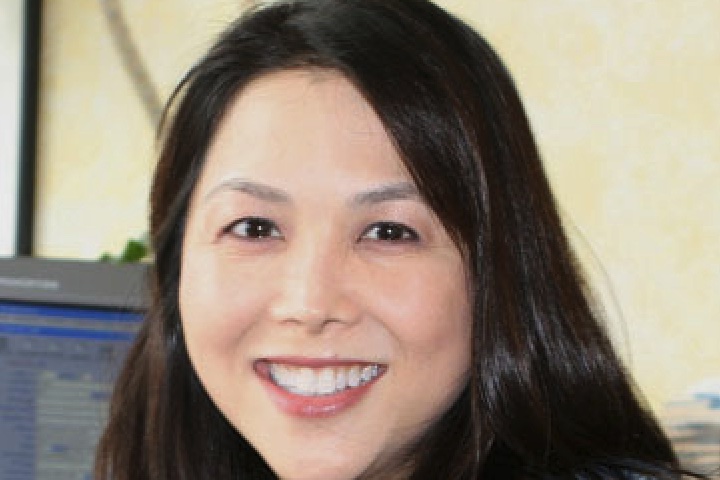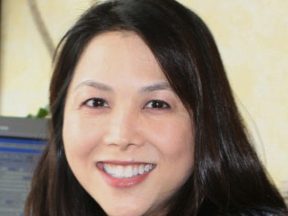Many merchants dream of building a successful ecommerce business and then selling it. Shirley Tan, the founder of AmericanBridal.com, did just that. She launched the business, built it to roughly $6.5 million in revenue, and then sold it.
I spoke with her recently about the process — and the post-sale emotions of it all.
Kerry Murdock: You built and then sold AmericanBridal.com.
Shirley Tan: I started American Bridal as a mail-order catalog in 1994. We putted around for a couple of years and barely broke even. Then, when the Internet came along, a friend suggested registering our domain name. We listened, and we moved our catalog online. At that time, we were still thinking of it as a catalog online. But we soon discovered quickly that it’s more than just a catalog online. We could actually operate it like a real store but have a virtual presence.
That was in 1996. We moved to the Yahoo! platform in 1997.
Murdock: In 1996, you were thinking Internet. That’s way before most of us.
Tan: Actually, we even had a shopping cart. It’s just that nobody bought anything from it. Our stuff was great; nobody else had it. What was going on? We learned early on that the platform that you’re on is very important, so we migrated to the Yahoo! platform.
Murdock: You migrated to Yahoo! in 1997 and built your business over several years. When did you sell it?
Tan: We closed the escrow in May 2009, but the selling process started in early 2008.
Murdock: Why did you sell it?
Tan: I was able to visit a really large competitor’s operation, and I realized that to take it to the next level, I would need a lot more capital. I didn’t have the resources and wasn’t willing to bet the farm and move in that direction.
Murdock: Who did you sell it to?
Tan: The acquiring company is TheKnot.com, which recently changed its corporate name to the XOXO Group.
Murdock: Was that the competitor that you visited?
Tan: It wasn’t them, but Theknot.com was a competitor, and they are the leading media conglomerate in the wedding space. They are the 800-pound gorilla, so to speak. They ended up buying it, so it’s good.
Murdock: You mentioned a need for expansion capital. Did you contemplate bringing in outside investors and not selling it?
Tan: We had explored that as well. The people I talked to didn’t think that ecommerce was sexy, and it wasn’t the type of business investors were interested in, especially here in the Bay Area and Silicon Valley, where people are more focused on technology companies. It was a bit discouraging, so I figured, “If I’m not going that route, what other route could I take?” The friends and family route wasn’t an option either.
Murdock: How much did you sell the business for?
Tan: I can’t say how much we sold it for, but I can say that when we sold the business, we were doing about $6.5 million [revenue] per year. That’s pretty much all I can share because I’ve shared that before, so that’s public knowledge.
Murdock: So in 2008, you visited a big competitor and decided to sell the business. Describe the selling process to us. First, how did you arrive at a price?
Tan: Based on people I’ve talked to — accountants, CPAs, attorneys — the range of what businesses are sold for. I’ve spoken with business brokers as well. In essence, I was a retailer. It’s just I had an online presence. I knew that there was a range of multiples. So, the range of multiples in retail is typically one to five times net income, maybe as much as six times. So, the key is getting the maximum for what you invested all your life in. If 5-times is the top, then you want to steer into that. It’s kind of like the blue book value of a car. It’s $5,000 to $8,000 — of course, you want to go to the $8,000 and not the $5,000. So, what can I do to help get that multiple higher is what I was focused on.
Murdock: How did you find the buyer?
Tan: First, I listed who I thought were the most likely prospects in acquiring the business. I looked at which online companies would benefit from our database, the list of customers we’ve acquired over time. I made a list of all those potential buyers, and then I made another list of companies that are competitors. Then I put in criteria: Who will have the money to pay me, will I be able to get out in a year, and how long will I have to stay? Things of that nature.
So, I made all these criteria, what I would do if I were buying a business, and then I called all the long shots first, like my Hail Mary prospects. That’s the only thing I know about football: you throw your Hail Mary out there and see who catches it. That’s what I did, and I practiced on all those people first because I figured, well, they’re going to say no anyway, so I might as well get all the rejections out of the way, and by then my pride won’t get so beaten up because I’ll be sort of used to it. So, that’s what I did.
And in the end, by the time I got to The Knot, it was pretty straightforward. I called up the CEO and told him in two sentences. He said, “We’ll call you next week,” and they did.
Murdock: He called you back. How long after that did it take to close?
Tan: Almost a year. Things take time. It’s good to start early. Start to get the conversation going. And, I wasn’t only talking to them; I was talking to other people too. You don’t know which conversation will get further into the process. You call a whole bunch of companies because you don’t know which deal will close and the timing of it all.
One thing that I can share with you is how I decided to put The Knot on the list. In one of their earnings calls, the CEO mentioned that they were in acquisition mode. Another thing that led me to call them was they had just brought in a new COO. When I called, the COO had only been there for a couple of months. I knew it would be good timing because sometimes you bring in new people who want to put a deal under their belt. The timing of it was fortuitous. It worked out.
Murdock: Are you still involved with American Bridal or The Knot?
Tan: No. I’m no longer there.
Murdock: You’re a very successful, experienced entrepreneur. What are you doing now?
Tan: I’m still keeping up with all things ecommerce. I did some consulting last year, and this year I’m taking a break, but I’ve been doing a lot of soul-searching and trying to figure out what I want to do next. It would be great to work with a vendor focused on providing solutions for ecommerce entrepreneurs that can help grow their businesses. It would be a great experience for me. It would be a great learning experience, and I can add value to the vendor in developing product lines and solutions because I’ve lived through it.
I understand what entrepreneurs are going through and what’s going in their minds when they think, “Oh, I’m hitting a wall on processing orders. I can’t get enough orders out or my solution is not helping me. What do I do?” The challenges and just the mental psychology that happens internally, right? I could add a lot of value to that, and I would get a real kick out of learning a lot more things.
Murdock: Have you thought about starting a consulting company?
Tan: Yes, except I don’t want to. I think when you start something like that, you kind of do it all. I’d be more effective if I were responsible for one piece of the infrastructure versus everything.
At this time in my life, I want to zoom in on the things I think I can make a big impact instead of worrying about everything else that goes with managing and owning a business.
Recommended

If Your ‘Baby Is Ugly,’ Fix It
May 29, 2007
Murdock: What’s your advice for merchants contemplating selling their ecommerce businesses, not only about the financial aspects but also the lifestyle aspects? A lot of entrepreneurs don’t consider that. They throw everything into a business. Then they sell it without considering what they will do next.
Tan: Had somebody said that to me before, I probably would not have even paid attention to that aspect. In selling a business, everybody tells you to get your books in order and all that kind of stuff. I think that’s the given. That is the minimum thing that you need to do. One thing I never thought of, and I wish I had, is trying to figure out what I will do with myself.
What if I went to work for the company that bought me? That means that I’m no longer the boss. I will have a boss. If you’ve been doing your own thing like I have for the last 19, 20 years, that’s a big mental shift. I had a bit of a struggle, to be honest.
The other part was I didn’t think through what I would be doing after I left. I went through a bit of a mourning process. I missed my staff. I missed the people I worked with. I missed the third-party vendors that I worked with almost on a daily and weekly basis. I missed all of that. I’m not just missing being out of action, but just the whole thing where I used to make these decisions, but now I’m no longer making these decisions. I’m no longer part of something.
If there is one thing besides getting all your books in order, think about what you will do with yourself afterward. Not the rationalization stuff that we tell ourselves sometimes. Be honest with yourself. What are you going to do next?
Murdock: We appreciate your honesty and transparency. That’s not frequently discussed; entrepreneurs are not exactly the type who will play golf every day. They build and accomplish things, and the process you just described is an honest emotion.
Tan: I never heard it before, and I wished I had. I don’t know if I would pay attention, but if your readers are contemplating selling, ask yourself that question. It doesn’t hurt to have that in the back of your mind. Ask yourself, why are you selling your business? What are the reasons? Is it something that you can fix? Is it something that, like you said, can you bring in another person? Maybe you don’t need the money. What you need more is help. Ask yourself those questions and be honest with yourself.
Murdock: For readers that want to reach you, you have permitted us to link to your email address.
Tan: I’ll be happy to talk to people struggling through this or want to explore the possibilities. I’d be happy to help them out. I went through it, and I’d be more than happy to share my experience.




